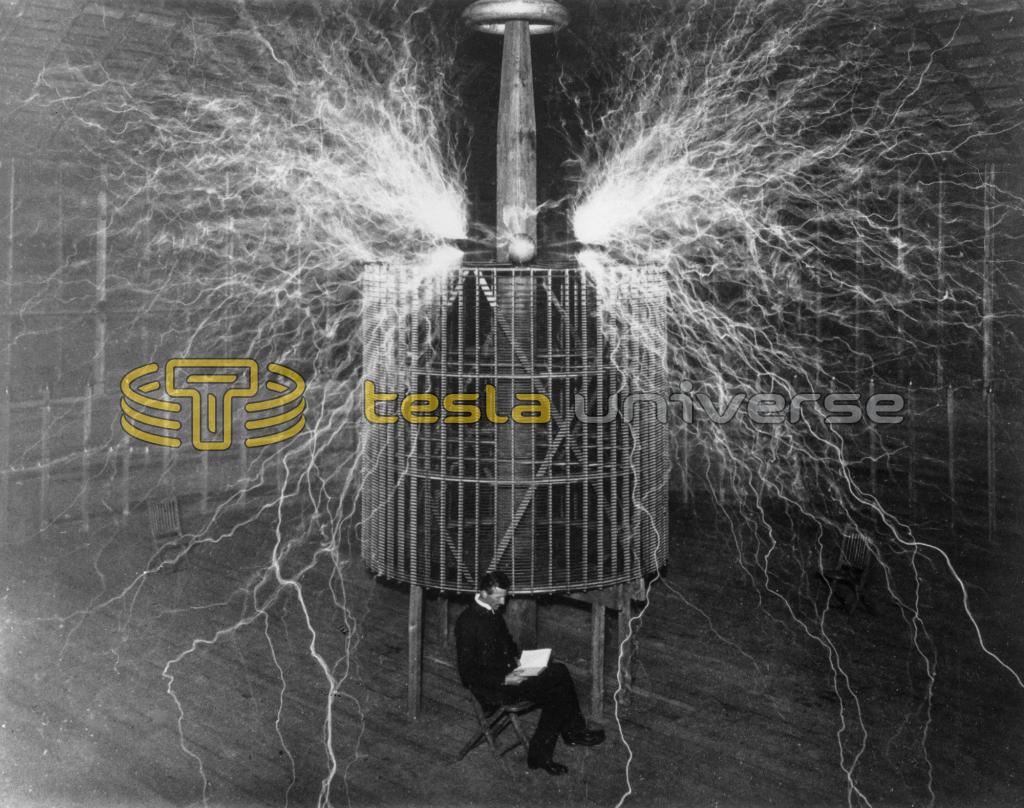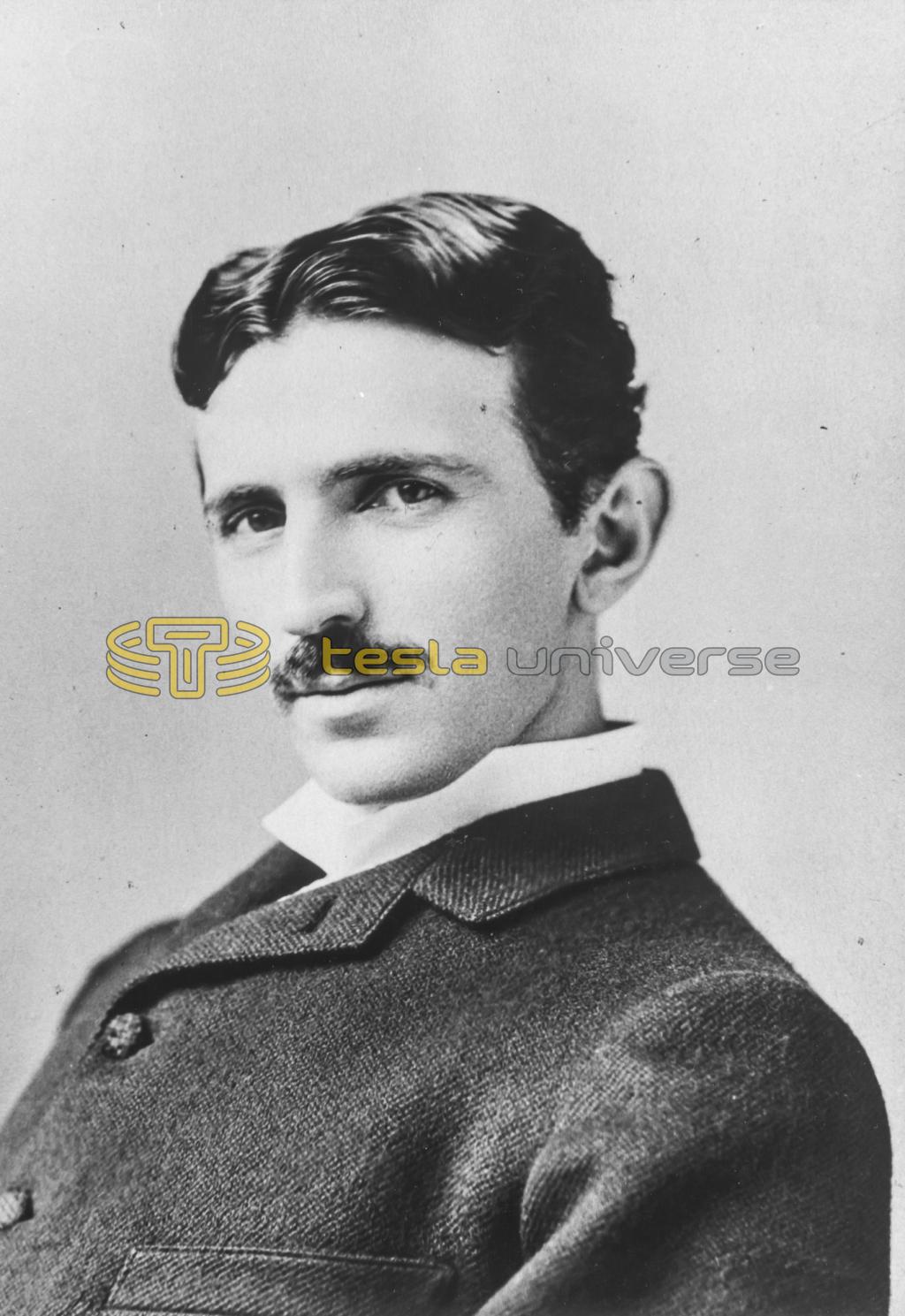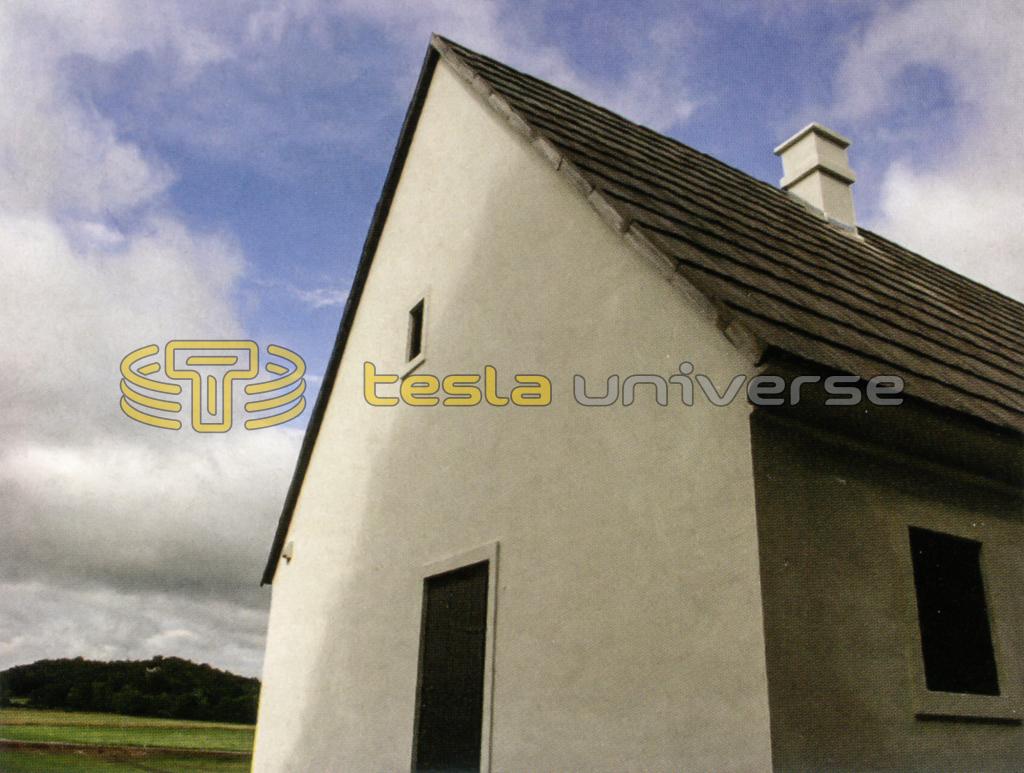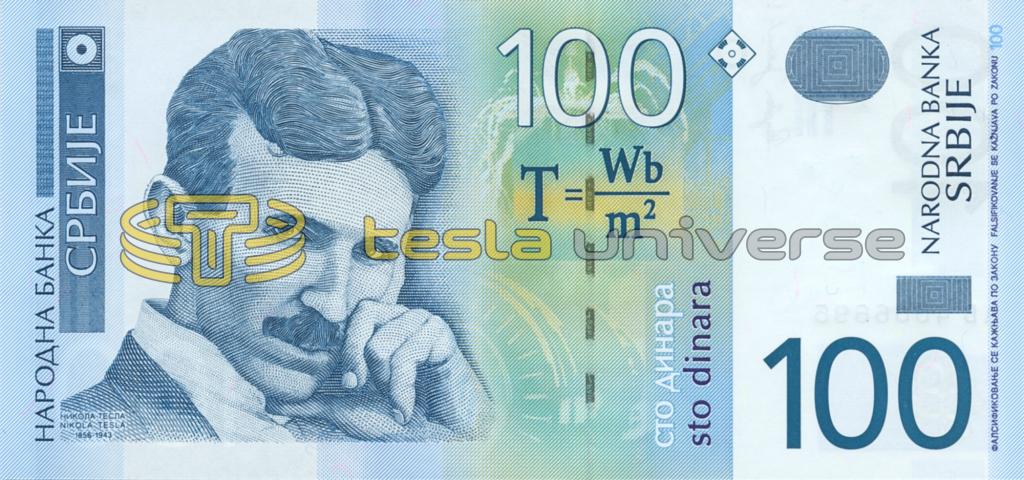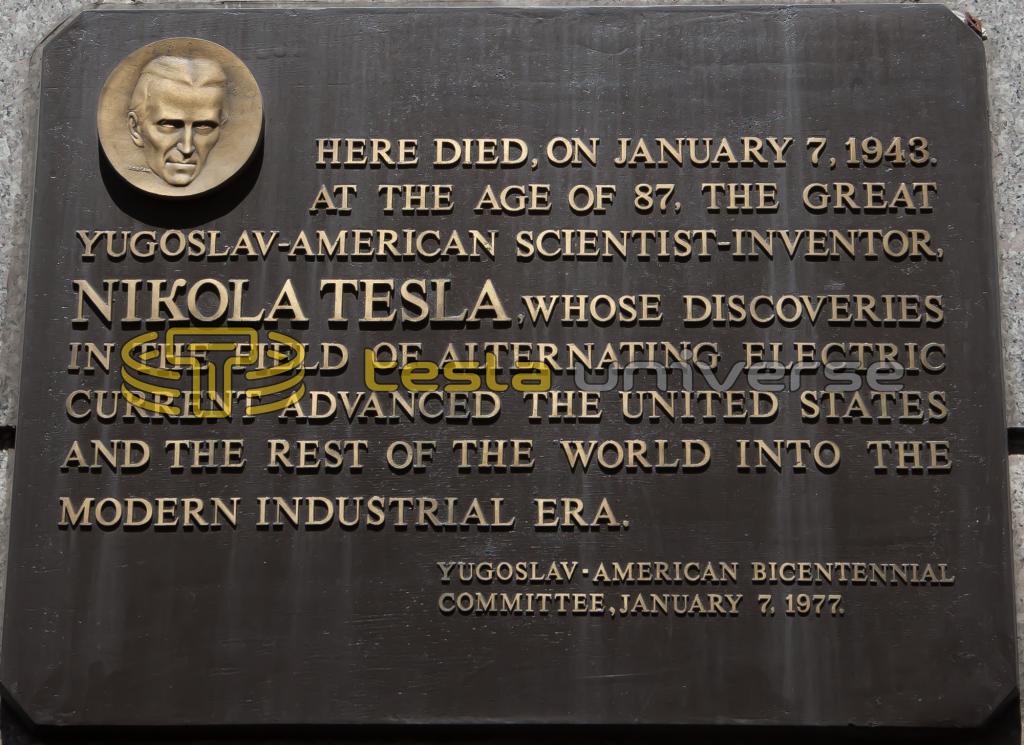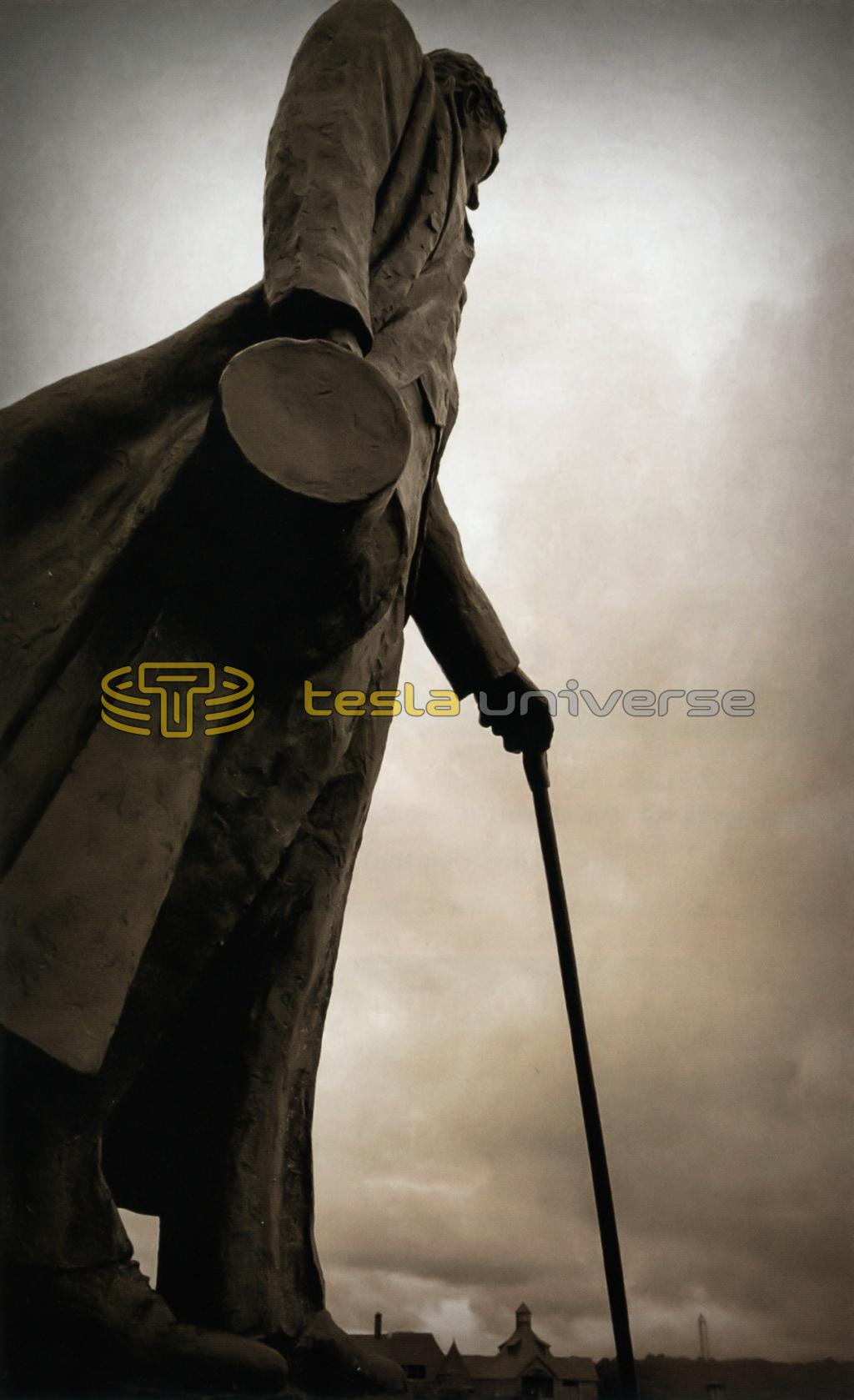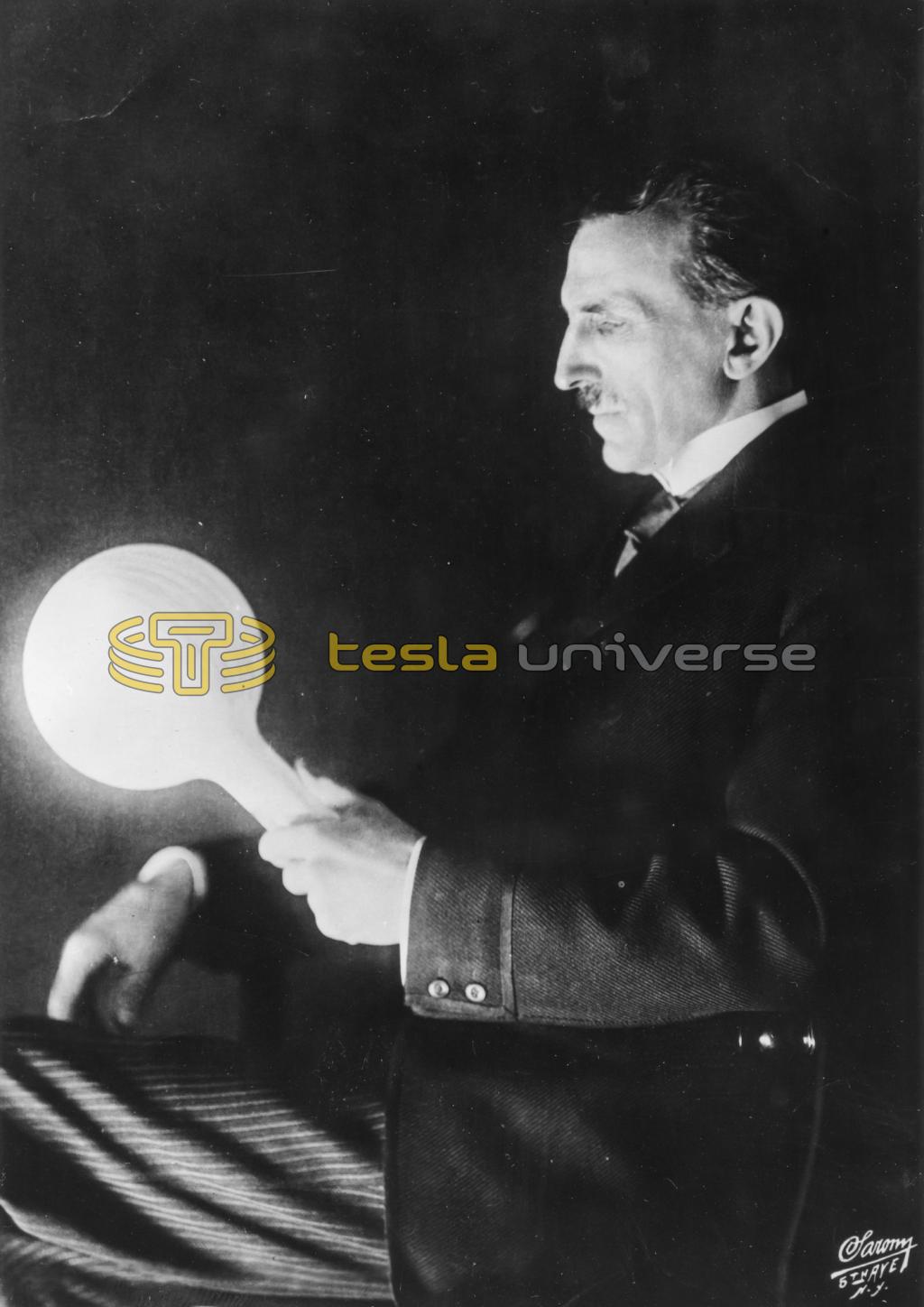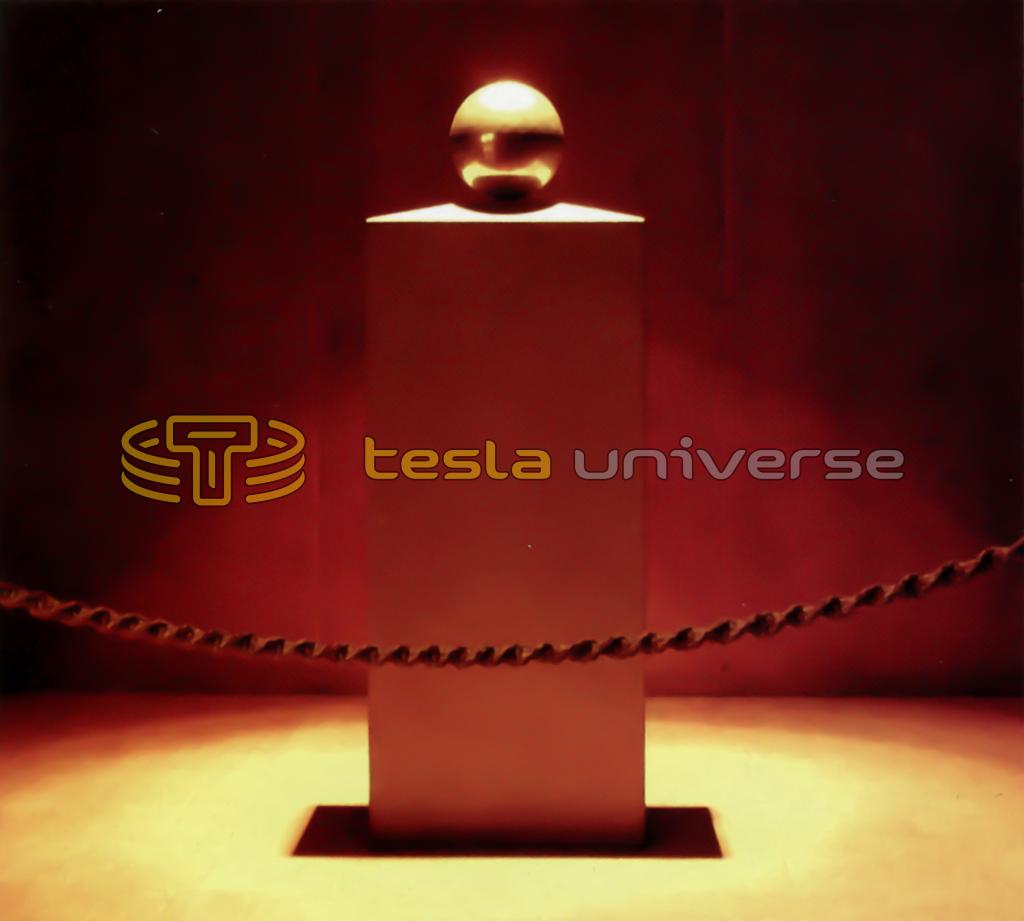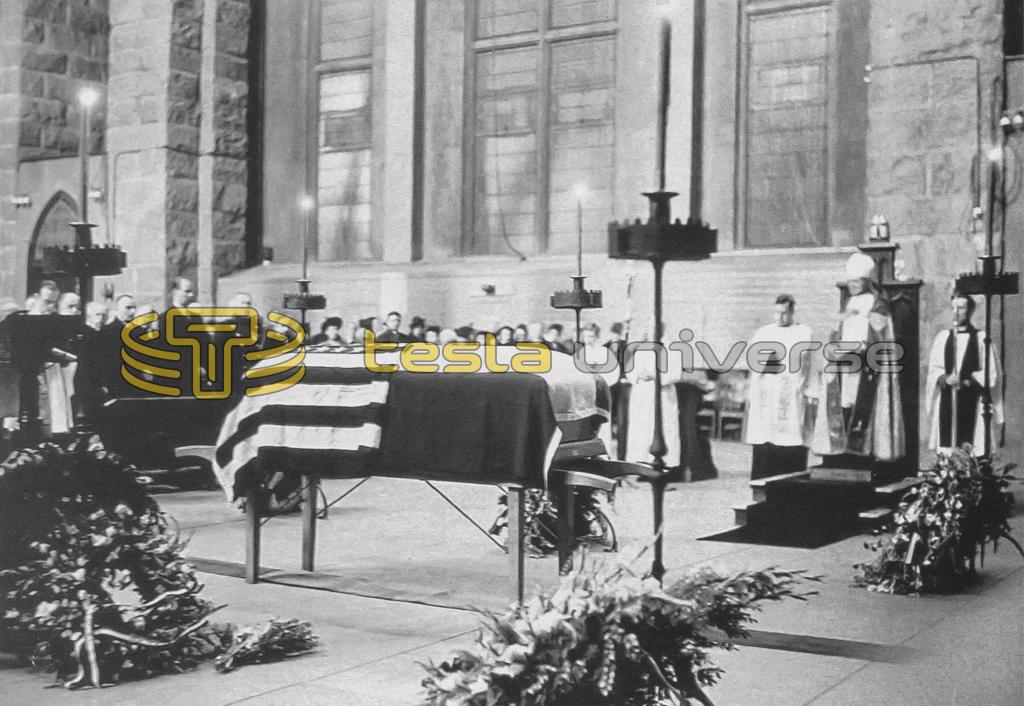
Nikola Tesla Articles
Nikola Tesla - The World's Sorcerer
Almost completely forgotten by American historians, the complex genius Nikola Tesla made monumental contributions in the past century that clearly reach into modem times.
The Croatian-born scientist conceived unheard of ideas in his time that continue to benefit us today. Every time we turn on a radio, use the circuitry of a cell phone or benefit from electricity, we use the master inventor’s scholarly ideas that society once called preposterous.
Tesla trained in Europe in the fields of physics, mathematics and mechanics, but we can also correctly call him a dreamer. Perhaps his greatest single contribution to mankind was his promotion of alternating current, as opposed to direct current in electrical power systems.
Tesla’s fellow inventor and bitter enemy, Thomas A. Edison, had to “pump up” his direct current every mile or so with powerhouses. Using a transformer could increase Tesla’s alternating current simply and directly by increasing the voltage. Tesla initially appealed to Edison to switch his system to alternating current, but Edison, backed by multimillionaire financier J. Pierpoint (sic) Morgan, would not budge.
Many years later, the famed George Westinghouse, head of Westinghouse Electric Corp., agreed with Tesla, and entered a contract with the eccentric scientist to build the gigantic alternating current generator inside Niagara Falls. The generator made history, sending electrical power all the way to New York City. Finally, Edison agreed that alternating current was a far superior system of power generation than his own direct current. A bust of Tesla now stands at Niagara Falls — and with good reason.
The intellectual, who actually had a Serbian heritage, also clearly laid the groundwork for the invention of radio, although he did not develop the finished product. Other men of science, such as Edwin Armstrong, Reginald Fessenden and Lee De Forest, would fine-tune and enhance radio.
Marchese Guglielmo Marconi, who most people would credit as the inventor of radio, had an ongoing dispute with Tesla over Marconi’s usage of Tesla’s already patented tuned radio circuitry, which we can find at the heart of any radio transmitter or receiver. A lecture in 1893 by Tesla clearly proves that Tesla’s disclosure was the birth of wireless communications.
In fact, Tesla sued Marconi in August 1915 for using his own ideas and theories. A higher court eventually threw out the lawsuit because the lower judge could not understand the terminology. The case wound its way through many levels of courts, eventually stopping at the U.S. Supreme Court, which found in favor of Marconi. Finally, in 1943, the U.S. Supreme Court reversed its earlier decision, ruling that Tesla had preceded all others with his rudimentary radio patents. This was an unprecedented move by the Supreme Court.
However, Tesla designed the first tuned circuit for a giant oscillator, and conceived of the idea of resonance through the air between a radio transmitter and receiver, which remains the basis of modern day radio broadcasting. Marconi tried to use Tesla’s circuits in his patent applications for his radio receivers. The U.S. patent examiner rejected Marconi four times, but on the fifth try, he cleverly hid the Tesla-tuned circuit inside the antennae’s circuitry, so the patent examiner passed his patent on radio invention in 1904.
After World War I ended, with Marconi himself dead, the Marconi Wireless Co. sued the federal government for failure to pay royalties due, for the Army’s use of radios during the war. The government investigated the matter, and discovered that the patent office had wrongly granted Marconi the patent on radio.
Tesla’s biographers and supporters say he designed the first wirelessly guided model boats. Scientists now use that same principle to guide satellites on their way to other planets, and to convey drones (unmanned airplanes) to their targets, which saved countless lives in wartime.
Many in his time viewed Tesla as a very peculiar man. The scientist remained a loner who did not want the common man to bother him. His thoughts lingered constantly in the sky, dreaming up new ideas and inventions that would help his fellow man.
He primarily focused his thoughts on helping mankind; so much so that he became destitute. Clearly, we can call the genius a philanthropist rather than a businessman. Tesla had no idea how to save money, and he died a pauper.
The Wizard’s Early Life
Tesla’s various biographers agree about very little. They concede that Tesla used high voltage, high frequency research to command the world’s attention. Most biographies coincide in their accounts of his friendship with Mark Twain.
Still, they don’t even concur on Tesla’s birth. Most list his birth as that of Serbian parents in Smiljan, province of Lika, Croatia (then Austria-Hungary), in the middle of a summer storm at midnight July 9, 1856. The dissident author, Margaret Storm, writing in “Return of the Dove,” suggests that an avatar delivered him to Earth as an extraterrestrial being in the body of Nikola Tesla in 1856 to begin the New Age. (That book, self-published and printed in green ink, amounts to something of an oddity by itself.)
Tesla’s father, the Rev. Milutin Tesla, a Serbian Orthodox priest, married a woman from western Serbia, Duka Mandic. Duka had no formal schooling, but reportedly had a photographic memory — a trait that Nikola, one of five children, inherited.
Tesla learned to speak English, French, German and Italian, beyond his native Slavic tongues. As a lad, he devised several inventions, including one that used lightning bugs to power a small engine. Apparently, this ended when an acquaintance of his with a taste for bugs devoured the power source.
Tesla’s childhood contained some tragedies, including the death of his brother, Dane, who died at age 12 after a horseback riding accident. Another version of Dane’s death story says he fell down a set of stairs and in his delirium accused Nikola of pushing him. Many writers theorize that the nightmares of Dane’s death and the subsequent rejection of Nikola by his parents caused some phobias and the eccentric behavior of Tesla later in life.
Some obsessions that Tesla carried with him through most of his life include a severe aversion to women wearing earrings, especially pearl ones.
He ordered waiters to serve his meals with 18 napkins so that he could polish all of his silverware before using it, and he preferred dining alone. The genius also calculated the cubic centimeters of space that each bite of food, dish or coffee cup occupied. Each day he had hotel attendants send 18 towels for dusting. Camphor’s smell nauseated him. Tesla claimed that he could hear a fly land in a room, and that he could hear thunderclaps hundreds of miles away. Violent flashes of light plagued his mind and visions his entire life, especially when emotions were running high. Tesla often counted his steps when walking. If he dropped small squares of paper into liquid while conducting research, he developed odd tastes in his mouth. Additionally, the iconoclastic inventor would talk to himself during lightning storms, and in his autobiography (serialized in Electrical Experimenter) he noted many of his “out of body experiences.”
He could not bear “except at the point of a revolver” to touch another person’s hair, which goes a long way in explaining why he never married or had a long-lasting relationship, save a strictly platonic affair with a woman named Katherine Johnson. She was the wife of one of Tesla’s friends, Robert Underwood Johnson, publisher of Century magazine. Over the years, according to Tesla biographer, Margaret Cheney, the three of them exchanged thousands of hand-delivered letters, sometimes up to three a day. Mrs. Johnson called the Serbian sage simply “Mr. Tesla,” while Tesla eventually became so comfortable that he gave her a nickname, “Madame Filipov,” and her husband “Luka Filipov.”
Some writers suggest that Tesla may have been homosexual. However, his grand nephew, Marc J. Seifer, argues in his doctoral thesis that no evidence exists to support that claim. He does suggest that Tesla suffered from an Oedipal complex, related to his brother’s death. One of Tesla’s other biographers, Kenneth Swezey, a journalist who remained close to Tesla in his declining years, called Tesla “an absolute celibate,” and confirmed that
he rarely slept.
From the time of his birth, the Rev. Tesla wanted Nikola to enter the ministry. Indeed, in remote Croatia of the late 1800s, very few career choices existed — save farming, the church and the army. During Tesla’s youth, his father insisted that he complete daily mental exercises to sharpen his reasoning and memory. His amazing photographic memory enabled him to devise and build complete inventions in his mind, which later in life caused some confusion with other inventors, engineers and financiers who would want to see Tesla’s ideas on paper.
When Tesla turned 6, his family moved to Gospic. During his schooling at the Real Gymnasium (equivalent to junior high school) Tesla did well at linguistics but truly shined in mathematics. He calculated the answers to problems so quickly that at first, his instructors thought the lad was cheating. Both his father and his uncle taught at the school.
In 1870, the family moved to Karlovac, where Tesla attended an advanced school and discovered his aptitude for physics. During school, he contracted malaria, and shortly after graduation, during an epidemic, contracted a case of cholera that lasted for nine months. Owing to his weakened condition from the earlier malady, Tesla almost died.
For a year following graduation and after his health improved, Tesla wandered the nearby mountains to regain his health and to avoid a war with the Turks. In 1875, Tesla entered the Polytechnic School in Graz, with a semi-scholarship from the military. During his three years there he developed an obsession with study, gambling and alternating current. In 1878, failing exams, because of unpreparedness (he would often play billiards for 24-hour stretches), Tesla withdrew from the school. A year later his father died and he returned to Budapest, where he studied until age 24.
Tesla eventually found a low-paying job with the Hungarian government as a telegraph engineer, which by all accounts he threw himself into with his usual vigor. Unfortunately, he suffered a nervous breakdown after a short while, claiming that he could hear the ticking of a watch three rooms away and that the passing of a train miles away interfered with his rest. The genius recovered and one evening, while walking in the city park with a friend, suddenly devised a solution to a problem with his alternating current motor.
By late 1882, Tesla had contributed so many improvements to the telegraph system that two friends of his recommended him to Thomas Edison’s telephone subsidiary in Paris.
The young Serb worked diligently and solved many problems for the company, yet two of his supervisors cheated him out of money he was owed for solving a ticklish problem with the Germans. Angry, Tesla resigned and the would-be wizard immigrated to the United States in 1884.
The New World
Problems beset Edison the day Tesla walked into his office. Armed with a letter of introduction, Tesla proffered it and Edison hired him immediately, partially because of a shortage of engineers. Some months later, in a dispute over a $50,000 stipend that Edison reportedly promised him for redesigning some equipment, Tesla resigned. It was just as well, as the two men differed so significantly that they disliked each other almost from the very first meeting.
In early 1887, Tesla managed to meet two financiers who helped him open a laboratory in Rahway, N.J. There, the Tesla Electric Light and Manufacturing Co. developed a system of arc lighting. Problems developed, and Tesla was forced out of his own company, essentially bankrupt. For some months, the great Tesla worked at menial positions, literally forced to dig ditches. Then, through a friend, he wielded an introduction to George Westinghouse.
The year was 1888, and Tesla not only moved to Pittsburgh but also patented his motor and alternate method of conveying power. Westinghouse bought the patent for a $1 million, but Tesla never saw that amount because he had to pay his helpers, and other patent issues clouded the sale. Tesla finally claimed around $255,000. That same year Tesla gave an important talk to a group of scientists about his alternating current theory.
On July 31, 1891, Tesla achieved what he later described as the most important milestone of his life — he became an American citizen. Around this time, the war between Edison and the team of Tesla and Westinghouse began. Edison, a stubborn proponent of direct current, began electrocuting dogs and cats with alternating currents in front of audiences to show them how dangerous he thought alternating current truly was.
Tesla’s mother, who impressed the young Nikola with her ability to recite long passages of Shakespeare and the Bible verbatim died in April 1892. During that time Tesla was overseas and had begun to concentrate his energies on radio. He had just recovered from a period of partial amnesia. Owing to his dislike of medical doctors, Tesla decided to cure himself. He did this by sitting for hours on end, trying to recall his early childhood memories. True to eccentric form, the young mastermind did manage to heal himself.
Returning to the United States in 1893, Tesla gave his now legendary lecture to the National Electric Light Association in St. Louis and the Franklin Institute in Philadelphia. The lecture described radio broadcasting in its elementary form. For the next few years, Tesla also gave some speeches and demonstrations showing how his gas-filled tube light (the forerunner of fluorescent lights) worked.
He gave one of his more unforgettable displays at the Chicago World’s Fair of 1893, which he illuminated with alternating current for Westinghouse. The exposition covered more than 700 acres, cost more than $25 million to produce and offered 60,000 exhibitors.
To show the public how the wireless lights could work, he often stood on a stage and used himself as a conductor, allowing hundreds of thousands of volts of current to pass through his own body. Habitually, his clothing would emit sparks and glimmers of halos hours after the demonstration. The Serbian maestro knew how to thrill the American people. (Later in his career, he would fake some of the better known photos of himself sitting among bolts of lightning surrounding his turbines and generators.)
Niagara Falls: An Extraordinary Incident
Writing in his autobiography, Tesla commented that as a child in remote Croatia he saw a photograph of Niagara Falls and told his uncle that one day he would harness its energy. Some decades later, he did just that, calling it an “extraordinary incident.” Both Westinghouse and General Electric used Tesla’s equipment and theories, and the Niagara Falls Commission delivered an amazing amount of electricity — 15,000 horsepower worth — to Buffalo, 26 miles away, to run the streetlights and street cars.
March 13, 1895 proved to be a low day in Tesla’s life. His New York City laboratory and workshop on 33-35 South Fifth Ave. burned to the ground — uninsured. Newspapers the world over reported the fire and Tesla suffered depression. Even his good friends, the Johnsons, could not cheer him up. The Serbian mastermind was unhurt, however — he had been sleeping at his hotel at the time of the 2:30 a.m. blaze. Tesla lived most of his life in hotels, and almost always had difficulty paying the bills.
Tesla soon came out of his slump and found a suitable building for a new workshop at 46 Houston St. He wired inventors and financiers all over the globe for help and equipment. For Tesla, however, the first of many years of financial problems began.
In 1897, shortly after getting settled in his new laboratory, he suffered some health problems caused by working on the new X-ray device that he and other inventors were checking for safety.
During that same year the patent office accepted his application for a patent of his basic radio signaling equipment and theory. Just two years later, he filed for a patent for radio remote control for use in guided vehicles. The examiners granted the patent for that application almost immediately. In 1900, they granted the patent for the radio theory and equipment he had submitted in 1897. As noted earlier, the patents were both subjects of controversies and lawsuits by other jealous inventors.
During an 1897 speech discussing his transmission of power, a confident Tesla proclaimed that one day he could send messages to Mars. Critics, newspapers and scientists met this statement with some degree of skepticism.
The following year, Tesla caused an earthquake of types in Manhattan when he attached an electro-mechanical oscillator to an iron pillar in his laboratory. The pillar transmitted the vibrations to the core of the Manhattan soil. Just as in an earthquake, people felt the vibrations and repercussions miles away. As windows broke and buildings shook, officials knew right away that the bizarre inventor somehow had something to do with the disturbance. The police dispatched two of their finest just as Tesla realized what he had done. He took a sledgehammer to the offending equipment, explained the situation to the two amazed police officers and then asked them to leave his lab, for he had to complete his work. Tesla later told reporters that he could destroy the Brooklyn Bridge in a matter of minutes.
At the height of the Spanish-American War controversy, Tesla displayed the world’s first radio-controlled robotic boats at Madison Square Garden. More than 15,000 people attended, but his display of automation almost got lost in the war news. Interestingly, what the Serbian genius did not show the public was that he had devised an unmanned and self-propelled torpedo boat, replete with batteries, lights and signaling devices. It also had the ability to submerge or rise to the water’s surface upon electronic command. Tesla had learned to become protective of his inventions, and he received a patent for the robotic device in November of that year.
A Westinghouse attorney, Leonard Curtis, invited Tesla to move to Colorado Springs in 1899. Various financiers agreed to help pay Tesla’s expenses. He readily accepted, stating his goals as surpassing Marconi in his wireless system and learning how to send energy around the world without the use of wires. In summer of that year, he conducted dangerous experiments with lightning. The maverick creator produced such a strong current that he knocked the Colorado Springs electric powerhouse out of commission by catching it on fire, thus plunging the entire city into darkness. Tesla sent a crew of engineers to repair the damage and returned electricity to Colorado Springs within a week.
- Telephone repeater
- Rotating magnetic field principle
- Polyphase alternating current system
- Induction motor
- Alternating current power
- transmission
- Tesla coil transformer
- Wireless communication
- Radio theory
- Fluorescent lights
- Experimentation with death/disintegrator/beam weapons
- Early theories on the laser beam
- Tesla also held more than 700 other patents.
Wardenclyffe
A short time later, critics again bombarded Tesla when he announced that he had heard rhythmic radio signals from outer space on some of his Colorado equipment. Returning to Manhattan in 1900, he further stupefied the press by announcing his plans for Trans-Atlantic signaling and world radio broadcasting. Tesla planned to operate his robotic boat at a Paris exposition from his Manhattan office. Meanwhile, as always, his finances dwindled, and he went searching for financing. J. Pierpoint (sic) Morgan financed the venture for $150,000 but demanded that the inventor use 51 percent of his radio patent as collateral on the signature loan.
Tesla went searching for land and found 2,000 acres on Long Island. He dubbed the site Wardenclyffe. The transmitting station would rise over 100 feet in the air, shaped much like a mushroom. Wardenclyffe’s final tower rose majestically 187 feet in the air, and Tesla centered it on a shaft that contractors bore into the ground 120 feet. Tesla erroneously assumed that the U.S. government would eventually want to use the site for coastal defense.
While his financial woes mounted, more bad news arrived. Marconi had signaled Newfoundland from Cornwall with equipment not nearly as elaborate as Wardenclyffe. Tesla’s financial problems grew even worse, and Morgan refused to provide more funding. Creditors hounded Tesla and no financier appeared willing to help the eccentric inventor. He began manufacturing small coils for medical use, but it was a temporary stopgap measure.
Lawsuits abounded. Tesla’s stature in the world financial community declined during 1906 to 1912. In 1912, Westinghouse, who had supplied equipment for Wardenclyffe, won a lawsuit against Tesla, and removed some $23,000 worth of equipment from the site. To continue living at the Waldorf Astoria, Tesla signed two mortgages over to the hotel to satisfy $20,000 worth of bills there. During World War I, wrecking crews under the guidance of the U.S. government demolished Wardenclyffe because authorities believed German spies were sending signals to the Fatherland from the mammoth structure.
Over the next few years, little monetary relief came Tesla’s way as he attempted to talk J.P. Morgan Jr. (J. Pierpoint [sic] Morgan died in 1913) into financing some new projects, including designs for a vertical lift airplane and an advanced turbine. The younger Morgan advanced him $15,000 for nine months and started reminding Tesla that he needed to repay the original $150,000 that his father had loaned him. Tesla did earn about $24,000 from a German franchise on his radio equipment when a German firm built a signaling station for the U.S. Navy.
The American Institute of Electrical Engineers awarded Tesla the Edison Medal, its highest honor, in 1917 — but not without Tesla expressing his true opinion of the now-ill Edison. Officials and friends had to coax Tesla to accept the award and attend the white tie and tails affair, which became confusing when the guest of honor left the gathering to pursue his lifetime habit of feeding pigeons in a nearby park.
Also in 1917, Tesla’s automobile speedometer royalties amounted to $17,000. The funds would have continued had it not been for the war and the halt in car production.
In his 60s, illness and poverty plagued Tesla. At one point, sheriffs’ deputies came to seize his personal belongings. The genius was so poor that to pay his two secretaries he offered to cut the Edison Gold Medal in half and give them each a piece of it.
They declined, and instead gave Tesla money. His lifelong obsession with pigeons continued as well, and at one point he insisted he had a divine mystical experience with a dying pigeon, a favorite of his.
The Light Declines
In 1936, on Tesla’s 80th birthday, he issued a 10-page statement that debated current theories on cosmic rays. Exactly one year later, on his birthday, the ambassador from Yugoslavia awarded him the Grand Cordon of the White Eagle, that country’s highest honor.
In his diminishing years, Tesla became increasingly confused. In 1937, a taxi struck the elderly creator, and his health never improved. He suffered heart and lung problems but generally refused medical attention. Tesla’s phobia of germs grew, and he did not want anyone to get within a few feet of him.
One night in January 1943, he summoned a messenger boy and dispatched him with an envelope containing $100 for Mark Twain, his old friend. Twain, of course, had been dead for some time, but Tesla insisted that Twain had visited his room the night before.
On Jan. 8, 1943, Alice Monaghan, a hotel maid, ignored a “Do not disturb” sign that had been in place for two days and opened Tesla’s door to find him dead. Tesla died virtually destitute and alone at age 86. His estate amounted to little more than $2,000.
Eugene Schultz, current manager of the Frank E. Campbell Funeral Home, confirmed that Tesla’s staff and nephew (Sava Kosanovic) summoned funeral directors from Campbell’s to transfer Tesla’s thin and gaunt remains to the funeral home. The staff also notified the FBI, who opened Tesla’s safe, looking for government related files. Some biographers claim it wasn’t the FBI, but officials from the Office of the Custodian of Alien Property, a suggestion that seems hardly appropriate, since Tesla was a U.S. citizen.
Meanwhile, at the Frank E. Campbell Funeral Home at 81st St. and Madison Ave., a sculptor prepared a death mask of the great inventor. Longtime friend, admirer and associate Hugo Gernsback ordered the death mask, which reportedly faithfully reproduced Tesla’s every wrinkle and facial contour. Gernsback had the death mask copper-plated and placed it in his office.
On Jan. 10, Tesla laid in state at the funeral home, but according to one biographer, only 12 people, some of whom were reporters, attended the calling. That same day, Mayor Fierello La Guardia read a moving eulogy written by Croatian author Louis Adamic over radio station WNYC.
The state funeral held Jan. 12 was quite a different matter. Tesla’s loyalists now elevated Tesla almost to a royalty status because of the mounting tensions between Serbians and Croatians. More than 2,000 people attended his funeral services, mostly conducted in the Serbian tongue. Tesla’s nephew decided to hold the funeral service at the Cathedral of St. John the Divine, because the Serbian Cathedral wasn’t completed at the time. Owing to the tension between the Serbians and the Croatians, the bishop, William T. Manning, gave his permission to use St. Johns on the condition that no one make any political speeches.
The funeral directors had covered Tesla’s casket with the American flag in place of the usual pall, but they later opened Tesla’s casket for the funeral service. Four tall halo-style candles guarded the casket corners, and priests placed the icon of the Holy Redeemer near the choir loft. King Peter II of Yugoslavia sent a huge floral offering, which the funeral directors placed near the head of the casket.
Oscar Gavrilovitch of the Yugoslav Consul of New York served as head usher. Although Tesla had been an American citizen for many years, the Yugoslavian government honored him by making his funeral a state function. Constantine Fotitich, Yugoslavian ambassador to the United States represented Yugoslavia. Serbians and Croatians sat on opposite sides of the church. Tesla’s journalist friend, Kenneth Swezey, settled in the front row with Tesla’s nephew.
Bishop Manning began Tesla’s funeral service in English. The Rev. Dushan Shoukletovich, director of the Serb Orthodox Church of St. Sava, conducted the Sermon for the Dead. He had known Tesla personally, and officiated in the name of the Serbian Orthodox Church of America. Assisting him was Father Edward West, Sacrist of the Cathedral.
At the conclusion of the funeral service, Bishop Manning gave the benediction. Ambassador Fotitich led the mourners past Tesla’s casket for one last viewing. The pallbearers conducted the casket in procession to a waiting hearse, which took Tesla’s body to Ferncliffe Cemetery at Ardsley-on-the-Hudson, where he was cremated.
Kenneth Swezey and Sava Kosanovic, in a limousine provided by Frank E. Campbell, followed the hearse to the cemetery and the waiting receiving vault.
Charlotte Muzar, Kosanovic’s secretary, transported Tesla’s cremated remains to his native land in 1957. Muzar took the remains to the Nikola Tesla Museum in Belgrade in 1957.
Many of the mysteries and controversies surrounding Tesla remain to this day. No doubt can exist, however, that his rich legacy and inventions will live on in the hearts and minds of many.
